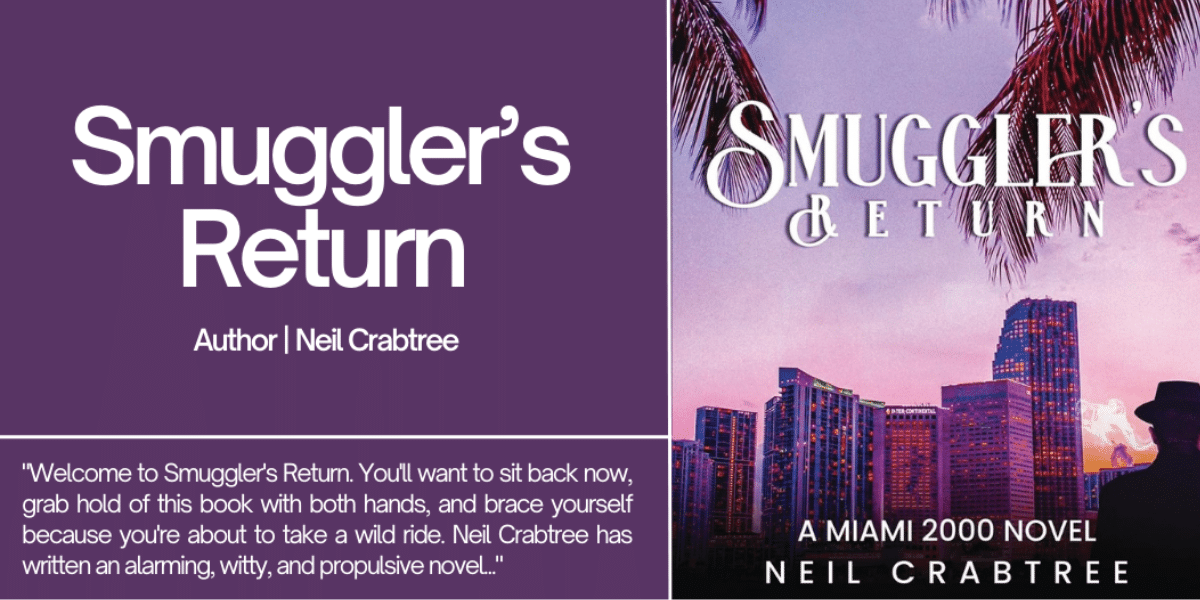By: Jason Gerber
Neil Crabtree’s Smuggler’s Return stands out as a classic in the world of crime fiction, especially for its style and characterization. Within its pages, a diverse range of characters, each with goals, flaws, and complexities, move the story forward.
From the intriguing protagonist, Johnny Fallon, to the fearsome captors, Smith and Jones, Crabtree’s thorough character development is obvious throughout the plot.
Johnny Fallon
Central to the narrative is Johnny Fallon, a character that denotes the moral ambiguity and internal turmoil that permeates throughout the story.
Unlike conventional heroes, Fallon is gripped in the perilous web of criminality. Crabtree depicts Fallon’s inner struggles, his visceral animosity towards his captors, and his yearning for redemption.
Through Fallon’s backstory as a former boxer, Crabtree adds depth to his character, showcasing both his physical strength and his capacity for restraint in escalating tensions. In Fallon, Crabtree probes the boundaries of survival and the moral quandaries that plague a world bereft of clear-cut ethical demarcations.
Smith and Jones
As Fallon’s captors, Smith and Jones emerge as enigmatic and multifaceted antagonists, proving the author’s craftsmanship in characterization. Smith, with his calculated demeanor, embodies the intellect behind the operation, while Jones, the epitome of brute force, represents physical dominance. The dynamic between the two adds to the tension and unpredictability of the story. Crabtree develops their motivations and contrasts their personalities with intrigue, leaving readers wondering about the characters’ true intentions.
Smith’s utter disregard for Fallon’s worries and Jones’ capricious nature increases the sense of danger that permeates the story. The complexities of Smith and Jones blur the distinction between morality and villainy, challenging readers’ preconceived notions of what constitutes villainy.
Supporting Characters
The novel boasts a diversity of supporting characters that enhance the plot of the story. From Rooster, Fallon’s erstwhile partner, to the mysterious receptionist, Penelope, each character contributes their distinctive traits and motivations to the overarching story.
Crabtree masterfully integrates each character’s story into the overall narrative, providing insight into their backgrounds and how they play a role in the unfolding events. They act as driving forces in the development of the plot.
Interpersonal Dynamics
A notable strength of Smuggler’s Return lies in its depiction of evolving relationships among the characters. Crabtree aptly navigates the intricate dynamics between Fallon and his captors, as well as the interactions between Fallon and other key figures he encounters.
These interpersonal dynamics, which examine the tense relationship between Fallon and Jones or the friendship between Fallon and Rooster, highlight the malleability of human ties in a society where crime is pervasive. These relationships change as the story progresses, making it harder to distinguish between loyalty and betrayal and friendship and strife.
Wrap Up
Crabtree paints a vivid portrait of the criminal world through the eyes of Johnny Fallon, the Smiths, the Joneses, and a cast of supporting characters. The inner conflict, motives, and relationships of these characters drive the story, transporting the reader into an ambiguous world where ethical boundaries are blurred. Smuggler’s Return exemplifies the potential of well-crafted characters in storytelling to attract and maintain the reader’s attention until the very end.
Experience the world of crime like never before in Smuggler’s Return by Neil Crabtree by pre-ordering your author’s signed copy. The book will be available in major online bookstores including Amazon Kindle, Barnes & Nobel, etc.
Published By: Aize Perez

















